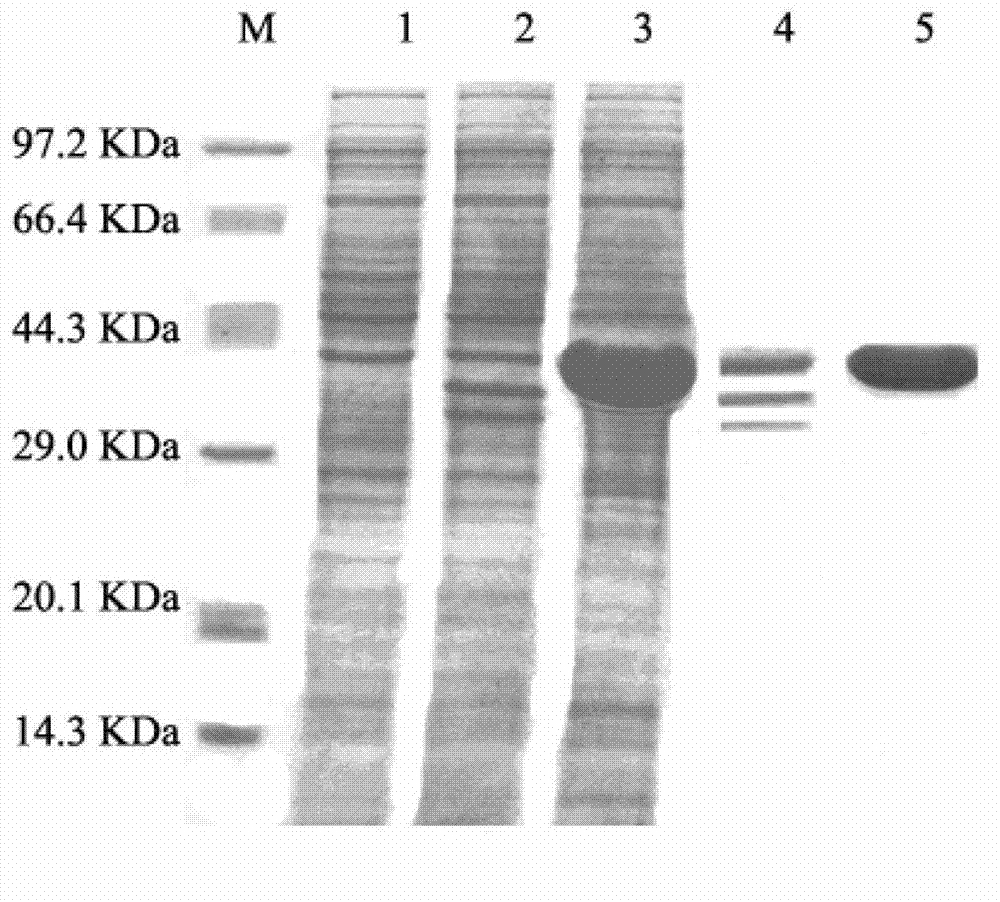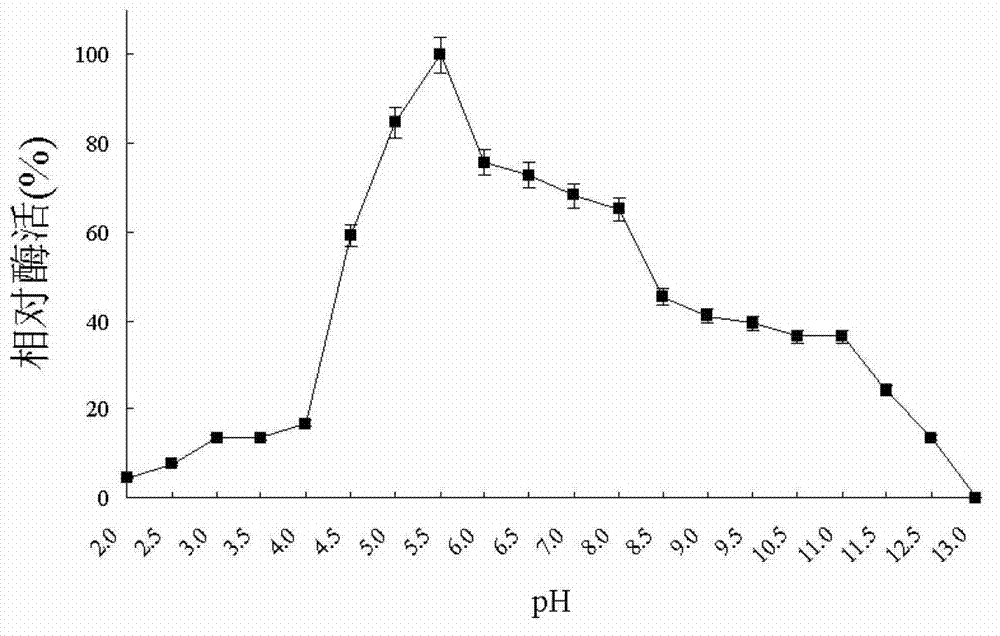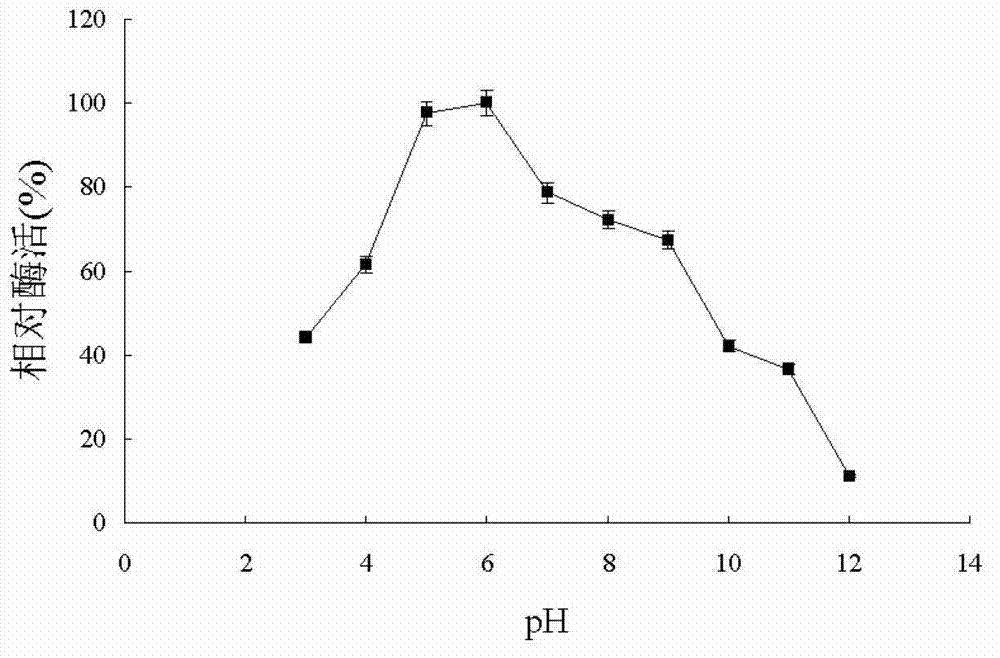Short-chain dehydrogenase CPE (Cytopathic Effect) gene, coding enzyme, carrier, recombination engineering bacteria and application
A technology of short-chain dehydrogenase and genetically engineered bacteria, applied in short-chain dehydrogenase and application fields
- Summary
- Abstract
- Description
- Claims
- Application Information
AI Technical Summary
Problems solved by technology
Method used
Image
Examples
Embodiment 1
[0046] The preparation of embodiment 1 short-chain dehydrogenase CPE gene, gene coding enzyme, carrier, recombinant genetically engineered bacterium
[0047] 1. Materials
[0048] (1) Strains and plasmids
[0049] Strains: Candida parapsilosis (Candida parapsilosis CDC317) was purchased from the American Type Culture Collection (ATCC), No. MYA-4646), plasmid pET21d was derived from Novagen (Madison, WI, USA), E.coli DH5α, E.coli BL21 (DE3) was purchased from Beijing Quanshijin Biotechnology Co., Ltd.
[0050] (2) Reagents
[0051] pMD-19T kit, Taq enzyme, dNTP mixture (single nucleotide mixture), IPTG, high-ligation (high-efficiency ligase), restriction endonuclease purchased from TAKARA company, 4-chloroacetoacetate ethyl ester (COBE) Purchased from Alfa Aesar, Yeast Genomic DNA Extraction Kit, Agarose Gel DNA Recovery Kit, Common Plasmid Mini-Extraction Kit, Common DNA Product Purification Kit were purchased from TIANGEN Company, Lowry Method Protein Quantitative Analysis...
Embodiment 2
[0111] The enzymatic property determination of embodiment 2 short-chain dehydrogenase CPE
[0112] 1. Determination of optimal temperature enzyme activity
[0113] Take a 1.5ml centrifuge tube, add 100 μL DMSO, 5 μL COBE, 380 μL PBS (pH=7.0), and incubate at 20°C, 25°C, 30°C, 35°C, 40°C, 45°C, 50°C, 55°C for 10 minutes , then add 5 μL of PBS solution of 10 mg / ml NADPH (pH 7.0) and 10 μL of the supernatant prepared by the method of step (3) of Example 1 (obtained by centrifuging 100 ml of the fermented culture broth with a wet cell concentration of 4 mg / mL), at 340 nm The absorbance value was measured at the place, and the kinetic curve of enzyme activity was made. The results are shown in Figure 4 shown.
[0114] Test results( Figure 4 (shown in curve a) shows that the optimum temperature for short-chain dehydrogenase CPE is 40°C, and the enzyme activity decreases rapidly when it is below 35°C or above 40°C.
[0115] 2. Determination of optimal pH enzyme activity
[011...
Embodiment 3
[0125] Example 3 Short-chain dehydrogenase CPE reduces COBE
[0126] The COBE reduction reaction system is as follows:
[0127]
[0128] Glucose dehydrogenase 75U / L, recombinant glucose dehydrogenase derived from Bacillus subtilis according to literature reports (Zhou Liping, Zhao Yan, Wang Huifang, Ding Jianxia, Cloning and expression of Bacillus subtilis glucose dehydrogenase, Journal of Jiangsu University (Medical Edition) ), 2004, 14(1), 7-10.)
[0129] The supernatant was obtained by centrifuging 5 ml of the fermented culture broth with a wet cell concentration of 4 mg / mL.
[0130] Mix the reduction reaction system and react overnight at 30°C with a 180rpm shaker. After the reaction, extract the reaction solution twice with 3mL ethyl acetate, take the organic layer and wash it with anhydrous Mg 2 SO 4 Dehydrate and filter to obtain about 2.5ml of filtrate, which is a mixed solution containing S-4-chloro-3-hydroxybutyrate ethyl ester (S-CHBE) product. The filtrate ...
PUM
 Login to View More
Login to View More Abstract
Description
Claims
Application Information
 Login to View More
Login to View More - R&D
- Intellectual Property
- Life Sciences
- Materials
- Tech Scout
- Unparalleled Data Quality
- Higher Quality Content
- 60% Fewer Hallucinations
Browse by: Latest US Patents, China's latest patents, Technical Efficacy Thesaurus, Application Domain, Technology Topic, Popular Technical Reports.
© 2025 PatSnap. All rights reserved.Legal|Privacy policy|Modern Slavery Act Transparency Statement|Sitemap|About US| Contact US: help@patsnap.com



